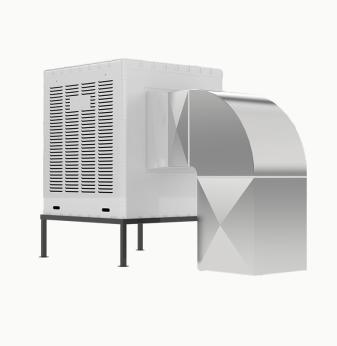Designing for OTA: How to Future-Proof Your Embedded Product from Day One

Getting Started: Why OTA Is Now a Product Requirement
Over-the-air (OTA) updates are no longer a nice-to-have — they’re a critical feature for embedded devices in 2025. From fixing security flaws and improving performance to deploying new features and meeting regulatory demands, OTA support is now a cornerstone of modern product strategy.
If your hardware can’t be updated securely and reliably after deployment, it’s already obsolete.
This article explores how to design embedded products with OTA in mind from the very beginning — covering bootloaders, memory layouts, cryptography, and compliance.
1. Start with a Secure and Upgradeable Bootloader
Why it matters:
The bootloader is the gatekeeper of firmware updates. If it’s not secure or OTA-capable, the entire system is vulnerable.
Best practices:
- Use authenticated and encrypted bootloaders (e.g., MCUboot, STM32 Trusted Firmware)
- Enable signature verification with public key infrastructure (PKI)
- Implement rollback prevention for anti-downgrade protection
Promwad Tip: We design dual-partition firmware architectures to ensure safe fallback in case an update fails.
2. Plan Your Memory Layout Early
Why it matters:
OTA updates require reserved flash space for staging, double-buffering, and metadata.
Key considerations:
- Separate areas for active firmware, update image, and settings
- Sufficient storage for logs and version control
- File system or storage stack (e.g., LittleFS, SPIFFS) that supports wear leveling
Checklist:
3. Build Cryptographic Foundations into the Firmware
Why it matters:
Security vulnerabilities in the OTA pipeline can be exploited remotely.
Must-haves:
- AES encryption for image confidentiality
- SHA-2/3 hashing for integrity
- ECC-based signing and verification
Bonus: Use hardware crypto engines where available (e.g., STM32 TrustZone, ESP32 HSM)
4. Choose an OTA Delivery Method That Matches Your Application
OTA types:
- FOTA (Firmware Over-The-Air) — MCU firmware, RTOS, drivers
- SOTA (Software Over-The-Air) — OS-level updates (e.g., Linux, Android)
- DOTA (Delta Over-The-Air) — Patch-level binary diffs to reduce payload size
Protocols and platforms:
- MQTT with TLS (for secure, lightweight embedded updates)
- HTTP(S) + REST APIs
- Cloud platforms (AWS IoT Core, Golioth, Memfault, Mender)
5. Design for Update Resilience and Observability
Failure-resilient features:
- Fallback partitions with version rollback
- Watchdog-assisted reboot + recovery
- Signature checks before and after write
Observability features:
- Logs for update success/failure rates
- Telemetry on power state, version, error codes
- Secure device ID and version history tracking
Regulatory tie-in: NIS2, ISO 21434, and ETSI 303 645 all require demonstrable update control and audit logs.

Summary Table: OTA Design Elements Checklist
| Design Element | Why It Matters | Tools & Techniques |
| Secure Bootloader | Prevent unauthorized code execution | MCUboot, Trusted Firmware, signature check |
| Memory Layout Planning | Enable safe update process | Dual partitions, storage FS, linker scripts |
| Cryptographic Support | Ensure update integrity + authenticity | AES, ECC, SHA, hardware crypto engines |
| OTA Delivery Protocol | Match use case & power constraints | MQTT, HTTPS, REST, cloud integration |
| Failure Recovery Logic | Prevent bricking, support rollback | Watchdog, fallback image, signature recheck |
| Logging & Versioning | Enable compliance and troubleshooting | Remote telemetry, signed logs, DPP exports |
Real-World Case Study: OTA Implementation for an Industrial IoT Device
A German OEM specializing in smart energy meters partnered with Promwad to enable secure OTA capabilities for a new line of LoRaWAN-enabled devices deployed across Europe.
Challenges:
- Remote firmware updates over constrained networks
- Ensuring device uptime in harsh environments
- Compliance with ETSI EN 303 645 and future EU Digital Product Passport requirements
Our approach:
- Integrated MCUboot with AES-encrypted firmware and ECDSA signature verification
- Designed a dual-bank memory layout on STM32L4 with fallback logic and secure rollback
- Delivered MQTT-based FOTA pipeline via Golioth Cloud with remote observability
- Implemented telemetry features for firmware version, update logs, and battery diagnostics
Results:
- Reduced manual maintenance costs by 40%
- Delivered firmware updates to over 10,000 devices within the first year
- Passed cybersecurity audit with full update traceability and rollback protection
Final Thoughts: Future-Proofing Begins at Firmware Level
OTA isn’t just about convenience — it’s about business continuity, customer trust, and compliance readiness. A device without OTA is a liability waiting to happen.
When you plan for secure, scalable, and observable OTA updates from day one, you gain:
- Lower field maintenance costs
- Faster iteration cycles
- Regulatory readiness
- Extended product lifespan
At Promwad, we help clients architect OTA-ready devices — from secure boot to cloud integration and update telemetry. Let’s build the infrastructure your future devices need — now.
Our Case Studies








